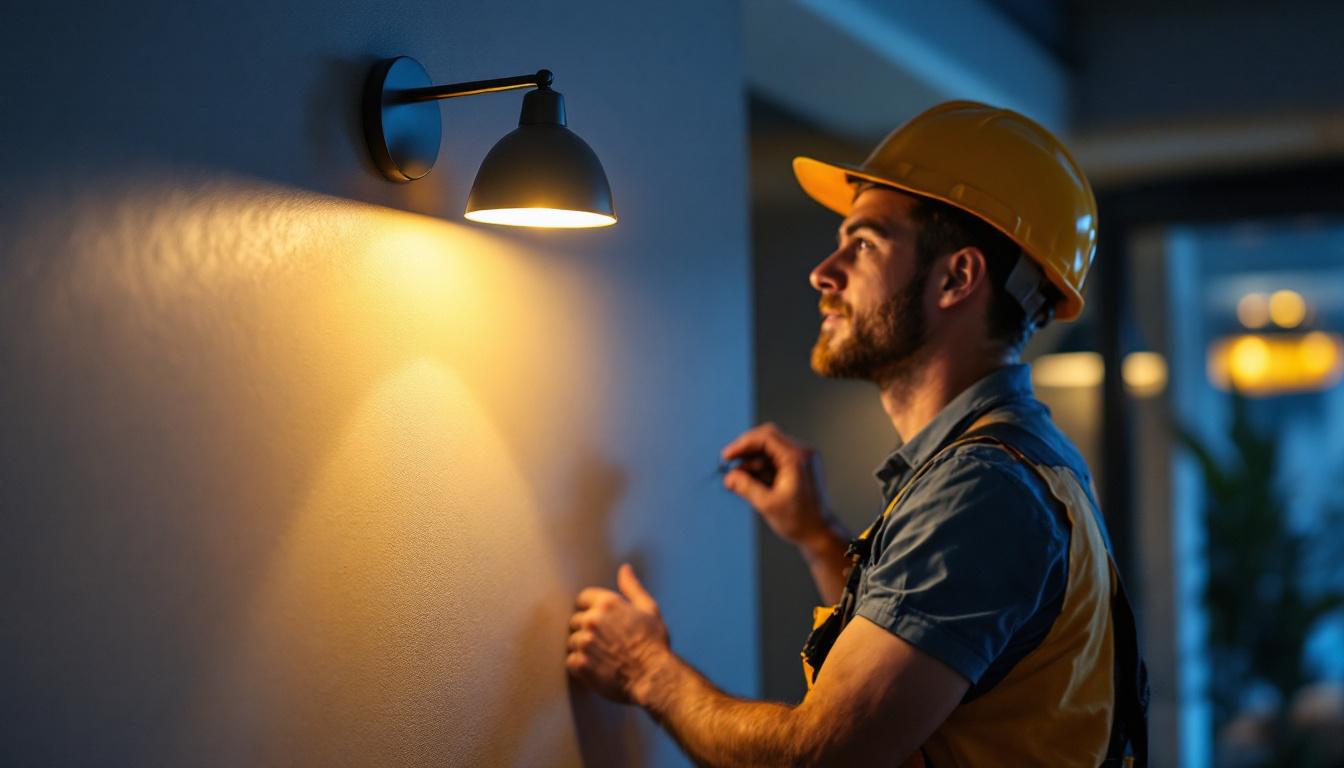
In the ever-evolving world of lighting technology, photo sensors have emerged as a vital component for lighting contractors. These devices not only enhance energy efficiency but also contribute significantly to the overall functionality and convenience of lighting systems. Understanding how to effectively utilize photo sensors can set a contractor apart in a competitive market. This article delves into the essential resources and insights that can help lighting contractors master the use of photo sensors.
Photo sensors, also known as light sensors or photocells, are devices that detect light levels and automatically adjust lighting accordingly. They play a crucial role in various applications, from street lighting to residential and commercial spaces. By understanding the fundamentals of how these sensors work, contractors can make informed decisions about their implementation. With the rise of energy efficiency standards and smart technology, the importance of photo sensors in modern lighting design cannot be overstated. They not only enhance convenience but also contribute significantly to reducing energy consumption and operational costs.
There are several types of photo sensors available in the market, each designed for specific applications. The most common types include:
Photo sensors operate based on the principle of photoconductivity, where the resistance of a material changes in response to light exposure. When light hits the sensor, it generates a small electrical current that can be translated into a signal for controlling lighting systems. This mechanism allows for automatic adjustments, ensuring that lights are only on when needed, thus conserving energy and extending the lifespan of lighting fixtures. Additionally, many photo sensors are designed with built-in features such as time delay settings and sensitivity adjustments, allowing users to tailor their performance to specific environmental conditions and preferences.
Moreover, advancements in technology have led to the development of photo sensors that can adapt to varying light conditions throughout the day. For instance, some sensors can differentiate between natural sunlight and artificial light, enabling them to optimize indoor lighting based on the time of day. This capability not only enhances user comfort but also supports energy-saving strategies by reducing reliance on artificial lighting during daylight hours. As smart cities continue to evolve, the integration of photo sensors with other IoT devices will further revolutionize how we manage and interact with our environments, paving the way for more sustainable urban living.
The integration of photo sensors into lighting systems offers numerous advantages for both contractors and end-users. Understanding these benefits can help contractors advocate for their use in various projects.
One of the most significant benefits of photo sensors is their ability to enhance energy efficiency. By automatically adjusting lighting based on ambient light levels, these sensors can significantly reduce electricity consumption. This not only lowers utility bills for clients but also contributes to a more sustainable environment. In fact, studies have shown that buildings equipped with photo sensors can achieve energy savings of up to 30%, making them a smart investment for both residential and commercial properties. Additionally, as energy costs continue to rise, the long-term savings provided by these devices become increasingly attractive, allowing clients to allocate resources to other important areas of their projects.
Photo sensors can improve safety and security in outdoor lighting applications. By ensuring that lights are activated during low-light conditions, they provide better visibility and deter potential intruders. This feature is particularly valuable for commercial properties and public spaces where safety is a top priority. Furthermore, the presence of well-lit areas can encourage community engagement and use of public spaces after dark, fostering a sense of safety among residents. In addition to deterring crime, enhanced lighting can also prevent accidents by illuminating pathways and potential hazards, making it easier for pedestrians to navigate safely during nighttime hours.
For homeowners and business owners, the convenience of automated lighting cannot be overstated. Photo sensors eliminate the need for manual operation, allowing for a seamless experience. This is especially beneficial in hard-to-reach areas or for individuals with mobility challenges. Moreover, the integration of photo sensors with smart home technology can further enhance convenience. For example, when combined with smart lighting systems, these sensors can be programmed to work in conjunction with other devices, such as motion detectors or timers, creating a fully automated environment that responds to the user’s lifestyle. This level of customization not only improves the user experience but also allows for greater control over lighting settings, ensuring that spaces are always optimally lit according to individual needs and preferences.
While photo sensors offer numerous benefits, lighting contractors must consider several factors when integrating them into their projects. These considerations can help ensure successful installations and satisfied clients.
Selecting the appropriate photo sensor for a specific application is crucial. Factors such as the environment, lighting requirements, and desired functionality should guide the decision-making process. Contractors should familiarize themselves with the various options available and their respective features to make informed choices.
Proper installation is key to the effective operation of photo sensors. Contractors should ensure that sensors are positioned correctly to avoid false readings caused by obstructions or artificial light sources. Additionally, following manufacturer guidelines and local codes is essential for compliance and safety.
Regular maintenance of photo sensors is necessary to ensure optimal performance. Contractors should educate clients on how to keep sensors clean and free from debris that could obstruct their function. In case of issues, being equipped with troubleshooting knowledge can save time and resources, allowing for quick resolutions.
To stay ahead in the industry, lighting contractors should leverage various resources to enhance their understanding and application of photo sensors. Here are some valuable resources to consider:
Many organizations offer online courses and webinars focused on lighting technology and photo sensors. These educational opportunities provide contractors with the latest information, trends, and best practices in the field. Participating in such programs can enhance skills and knowledge, ultimately benefiting clients.
Staying informed about the latest developments in lighting technology is crucial. Subscribing to industry publications and journals can provide contractors with insights into new products, case studies, and expert opinions. This knowledge can be invaluable when advising clients on the best solutions for their needs.
Building a network of fellow lighting contractors can facilitate knowledge sharing and collaboration. Engaging in industry forums, attending trade shows, and participating in local contractor associations can help contractors stay connected and informed about best practices and innovations in photo sensor technology.
Real-world examples can illustrate the effectiveness of photo sensors in various applications. Analyzing successful implementations can provide valuable insights for lighting contractors looking to enhance their projects.
In residential settings, photo sensors have been successfully integrated into outdoor lighting systems. Homeowners have reported significant energy savings and increased convenience, with lights automatically turning on at dusk and off at dawn. This not only enhances the aesthetic appeal of properties but also improves safety during nighttime hours.
For commercial properties, photo sensors have been utilized to optimize energy use in parking lots and building exteriors. By automatically adjusting lighting based on ambient light levels, businesses have experienced reduced energy costs while maintaining a safe environment for employees and customers. Case studies show that businesses implementing these systems have seen a return on investment within a short period.
Municipalities have also embraced photo sensors in street lighting projects. By installing these sensors, cities have improved public safety while reducing energy consumption. Reports indicate that cities utilizing photo sensors have achieved significant cost savings and enhanced community safety, making a strong case for their widespread adoption.
The field of lighting technology is constantly evolving, and photo sensors are no exception. Staying informed about future trends can help lighting contractors anticipate changes and adapt their practices accordingly.
The rise of smart home technology is influencing the development of photo sensors. Future sensors are likely to feature enhanced connectivity options, allowing for seamless integration with other smart devices. This will enable homeowners to control their lighting systems remotely, providing even greater convenience and energy efficiency.
As technology advances, photo sensors are becoming more accurate and reliable. Newer models will likely feature improved algorithms that can differentiate between natural and artificial light sources, reducing the likelihood of false triggers. This advancement will enhance the overall effectiveness of lighting systems.
With a growing emphasis on sustainability, future photo sensors may incorporate eco-friendly materials and energy-efficient designs. This trend aligns with the broader movement towards greener building practices, making it essential for contractors to stay informed about sustainable options in the market.
Mastering the use of photo sensors is crucial for lighting contractors aiming to enhance their service offerings and meet the evolving needs of clients. By understanding the fundamentals, benefits, and best practices associated with photo sensors, contractors can position themselves as knowledgeable professionals in the industry. Leveraging available resources, learning from successful implementations, and staying updated on future trends will further empower contractors to excel in their projects. As the demand for energy-efficient and automated lighting solutions continues to grow, the mastery of photo sensors will undoubtedly play a pivotal role in the success of lighting contractors.
Ready to elevate your lighting projects with the latest in photo sensor technology? Look no further than LumenWholesale, where we provide contractors with top-quality, spec-grade lighting products at unbeatable wholesale prices. Our selection of photo sensors meets the highest industry standards, ensuring you get reliable, high-performance lighting for every project. Plus, with free shipping on bulk purchases, you can stock up on the best lighting solutions without worrying about hidden fees or compromises. Don’t miss out on the perfect blend of quality, affordability, and convenience. Visit LumenWholesale today for Wholesale Lighting at the Best Value and make your next project shine.

Discover how light motion switches are revolutionizing the work of lighting contractors by enhancing efficiency and simplifying installations.

Discover how LED light bulbs can revolutionize your lighting installation projects with enhanced efficiency, longevity, and eco-friendliness.

Discover how offering decorative ceiling fans can boost your lighting contracting business.

Discover the top strategies lighting contractors use to maximize the impact of wall mount LED lights.